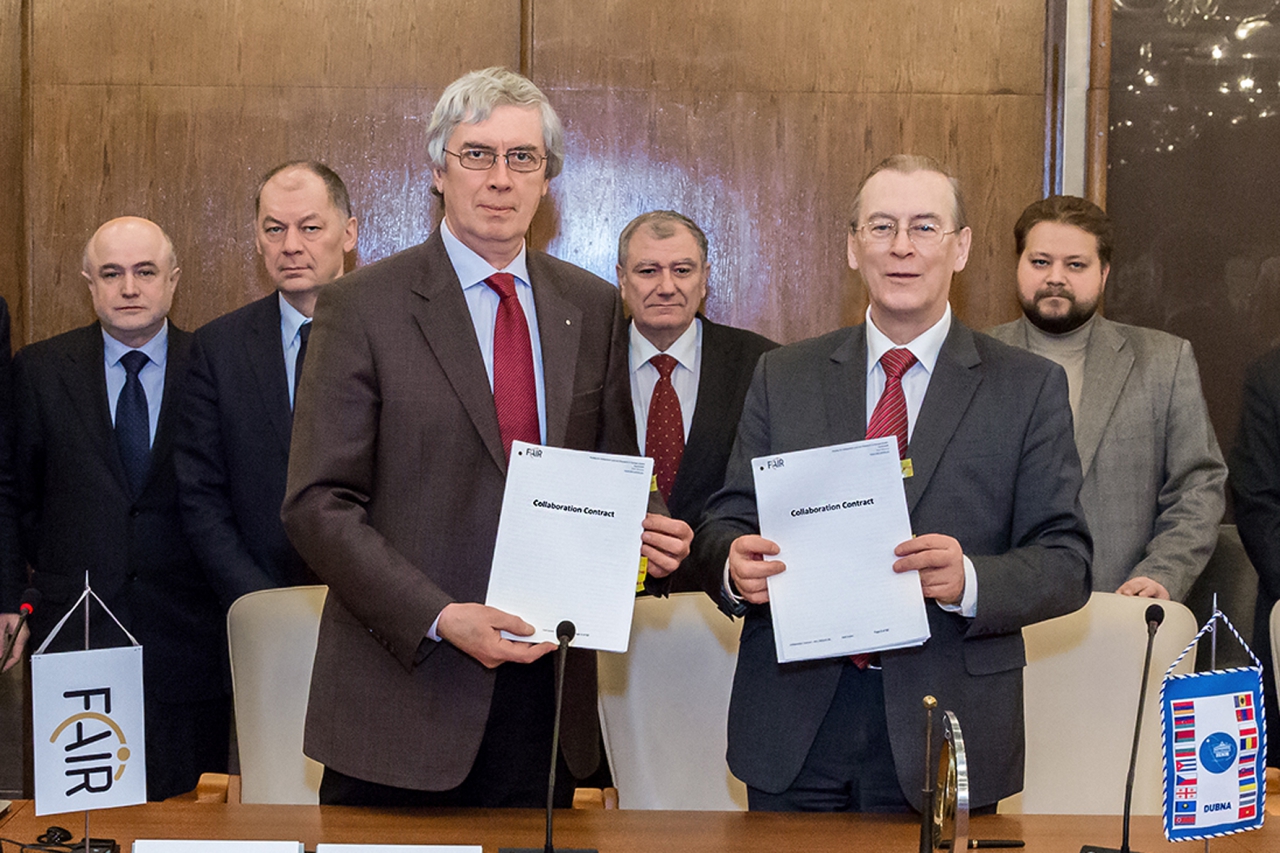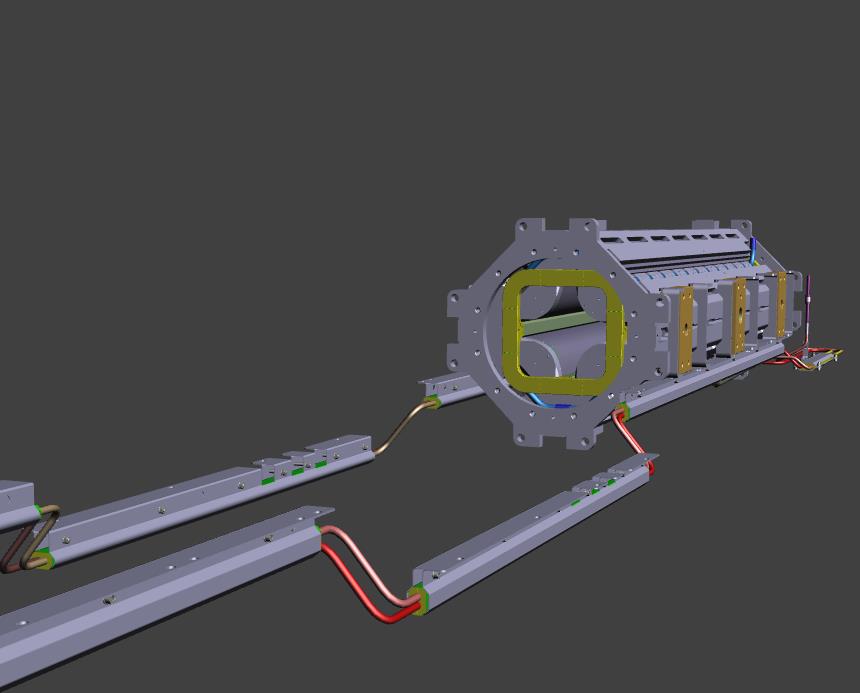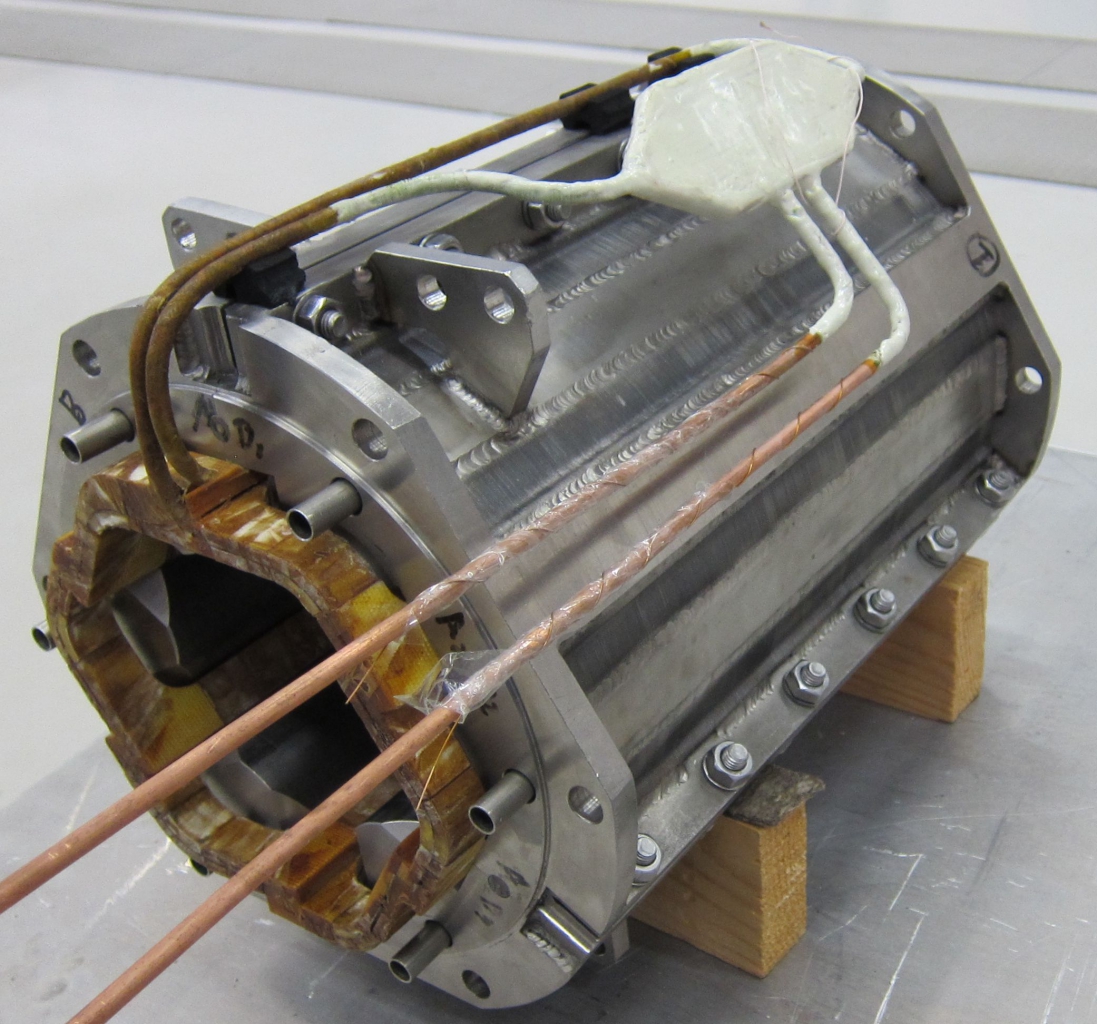Sie sehen momentan nur den öffentlichen Teil des GSI-Kuriers.
Um auch die GSI-internen Artikel angezeigt zu bekommen,
melden sie sich bitte an

Kurier - Messages from and for employees
Ausgabe: 19-2015 | 04.05. - 10.05.
News
News
Collaboration agreement sealed
FAIR and JINR conclude contract on the construction of magnets for particle accelerator
At the end of February 2015 FAIR GmbH and the Joint Institute for Nuclear Research (JINR) in Dubna, Russia, concluded an agreement on the construction of 300 magnets with various constructions, each weighing several tons. The magnets are to be used in the large-scale ring accelerator SIS 100 at FAIR. They are part of the high-tech contributions in kind from Russia for FAIR.
“JINR can now commence with the construction of the innovative superconductiing magnets. These are based on a new and unique technology, so as to control different types of particles particularly efficiently and flexibly on their track”, reports a visibly pleased Boris Sharkov, the Scientific Director of FAIR GmbH. After their completion the magnets will undergo extensive testing in Dubna prior to their deployment at FAIR.
The superconducting magnets were designed by GSI Helmholtzzentrum für Schwerionenforschung and are based on joint development work with JINR over a period of many years. They are the central components in the ring accelerator SIS 100 and keep the particles, which travel close to the speed of light, in their orbit. The SIS 100 has a circumference of 1,100 meters and will comprise a total of more than 800 main components.
In the development of the superconducting magnets it has been possible to unite two technologies for the first time. The magnets are fitted with superconducting cables, which allow for a very fast change in the magnetic field. At the same time the vacuum chambers into which the particle beams are fed are cooled to almost minus 273 degrees Celsius. For only so can the maximum magnetic field be created within half a second and at the same time the necessary vacuum, of one billionth of the ambient pressure, be attained. Under these conditions it is possible to accelerate very heavy atomic nuclei virtually to the speed of light.
Öffentlichkeitsarbeit FAIR/GSI
Kollaborationsvertrag unter Dach und Fach
FAIR und JINR schließen Vertrag über den Bau von Magneten für Teilchenbeschleuniger
Ende Februar 2015 haben die FAIR GmbH und das Joint Institute for Nuclear Research (JINR) in Dubna, Russland, einen Vertrag über den Bau von über 300 tonnenschweren Magneten unterschiedlicher Bauart geschlossen. Die Magnete sollen im großen Ringbeschleuniger SIS 100 von FAIR zum Einsatz kommen. Sie sind Teil der hochtechnologischen Sachmittel-Beiträge aus Russland für FAIR.

Boris Sharkov, Wissenschaftlicher Geschäftsführer der FAIR GmbH und Victor Matveev, Direktor des JINR in Dubna, bei der Vertragsunterzeichnung. (Quelle: Grigory V. Trubnikov, JINR Dubna)
Boris Sharkov, Scientific Director of FAIR GmbH and Victor Matveev, Director of the JINR in Dubna, at the signing of the agreement. (Source: Grigory V. Trubnikov, JINR Dubna)
„Jetzt kann das JINR mit der Fertigung der innovativen supraleitenden Magnete beginnen. Diese basieren auf einer neuen und einzigartigen Technologie, um ganz unterschiedliche Arten von Teilchen besonders effizient und flexibel auf ihrer Bahn zu kontrollieren“, freut sich Boris Sharkov, Wissenschaftlicher Geschäftsführer der FAIR GmbH. Nach der Fertigung werden die Magnete in Dubna umfangreichen Tests unterzogen, bevor sie bei FAIR zum Einsatz kommen.
Die supraleitenden Magnete wurden von dem GSI Helmholtzzentrum für Schwerionenforschung konstruiert und basieren auf einer langjährigen, gemeinsamen Entwicklungsarbeit mit dem JINR. Sie sind die zentralen Komponenten des Ringbeschleunigers SIS100 und halten die mit nahezu Lichtgeschwindigkeit umlaufenden Teilchen auf ihrer Bahn. Das SIS100 besitzt einen Umfang von 1.100 Metern und wird insgesamt aus über 800 Hauptkomponenten bestehen.
Bei der Entwicklung der supraleitenden Magnete ist es erstmals gelungen zwei Technologien miteinander zu vereinen. Die Magnete sind mit supraleitenden Kabeln ausgestattet, die eine sehr schnelle Veränderung des Magnetfelds erlauben. Gleichzeitig werden die Vakuumkammern, in denen der Teilchenstrahl geführt wird, auf fast minus 273 Grad Celsius abgekühlt. Denn nur so kann innerhalb einer halben Sekunde das maximale Magnetfeld erzeugt und gleichzeitig das erforderliche Vakuum, von einem Billiardstel des Umgebungsdrucks, erreicht werden. Unter diesen Bedingungen lassen sich sehr schwere Atomkerne auf nahezu Lichtgeschwindigkeit beschleunigen.

3D-Studie eines Quadrupolmagneten, wie sie am JINR gefertigt werden. (Quelle: GSI)
3D study of a quadrupole magnet, similar to those being constructed at JINR. (Source: GSI)

Ein bereits fertiggestellter Magnet für den FAIR-Beschleunigerring: Dieser sogenannte Sextupol-Magnet hat die Aufgabe, die Teilchenstrahlen zu fokussieren. : (Quelle: Hamlet Khodzhibagiyan, JINR Dubna)
A magnet that has already been completed for the FAIR accelerator ring: This so-called sextupol magnet has the task of focusing the particle beams. (Source: Hamlet Khodzhibagiyan, JINR Dubna)
Öffentlichkeitsarbeit FAIR/GSI
Die aktuellen internen Stellenausschreibungen finden Sie auch unter www.gsi.de/jobsintern
Gruppe PER-PAD











